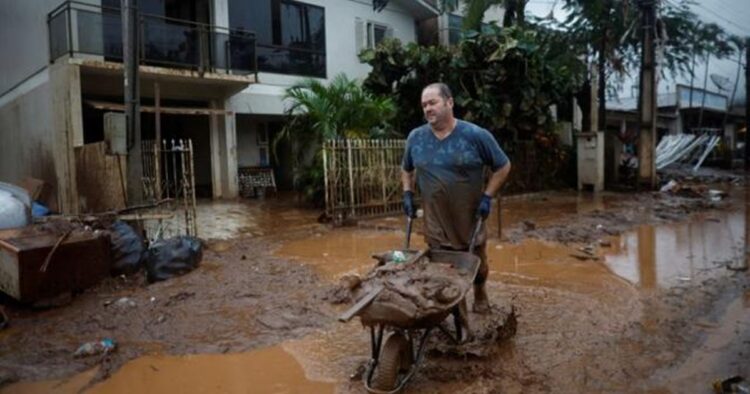In Brazil’s Rio Grande do Sul state, heavy rains have wreaked havoc, leading to a tragic death toll. The local civil defense government body reported that the toll has climbed to 143, up from 136 the previous day. In addition, 125 individuals are still unaccounted for, highlighting the severity of the situation.
The devastation caused by the relentless rains has forced a staggering number of people out of their homes. More than 537,000 residents have been displaced in the state, which has a population of around 10.9 million.
Families and communities are grappling with the displacement and uncertainty brought about by the calamity.
To address the crisis, the government swiftly announced emergency spending measures. Approximately 12.1 billion reais ($2.34 billion) have been allocated to provide immediate assistance and support to those affected.
ALSO READ: “Brazil Braces for Further Flooding and Landslides as New Rains Strike Southern Regions”
This substantial funding underscores the government’s commitment to aiding recovery efforts and alleviating the suffering of those impacted by the disaster.
Responding to the dire situation, the federal government has pledged substantial financial support to the state. With the latest allocation, the total federal funds made available to Rio Grande do Sul surpass 60 billion reais.
This significant investment aims to bolster relief initiatives and facilitate the state’s recovery from the unprecedented deluge.
Despite efforts to mitigate the crisis, weather experts have warned of further challenges ahead. Meteorological forecasts indicate that more rain is expected, exacerbating the already critical conditions. Rivers, already swollen or overflowing, are anticipated to rise further, posing additional threats to communities and infrastructure.
The unique geographical location of Rio Grande do Sul exacerbates its vulnerability to extreme weather events. Situated at a convergence point between tropical and polar atmospheres, the state experiences erratic weather patterns characterized by periods of intense rainfall or drought.
This geographical reality underscores the significance of proactive measures to enhance resilience and preparedness in the face of climate-related challenges.
As the state grapples with the aftermath of the devastating rains, concerted efforts are underway to provide aid, support, and resources to those in need. The resilience and solidarity of communities, coupled with coordinated government response efforts, will be crucial in navigating the path to recovery and rebuilding in the wake of this natural disaster.

















Comments